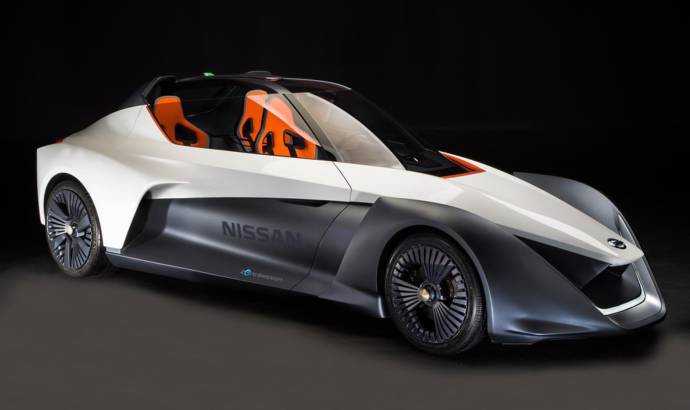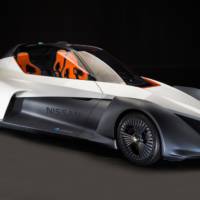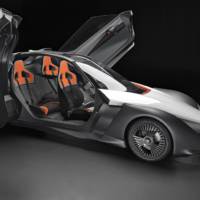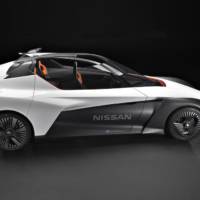Nissan can afford some exercises that will work or not, considering its financial evolution in the past years. SO there it is: the production version of the futuristic BladeGlider concept, unveiled in Tokyo Auto Show in 2013.
After two years of work on design, engineering and development, Nissan BladeGlider has evolved further into a real-life study into the potential of advanced EV performance.
High-waisted, rear-hinged dihedral doors provide entry and exit to the cabin. The open roof of BladeGlider is reinforced with an integrated roll-over protection structure.
Power is 100 percent electric, with powertrain performance delivered by Nissan’s technical partner for the BladeGlider project, UK-based Williams Advanced Engineering. Maximum speed of the demonstration models is in excess of 190km/h, with 0-100km/h taking less than 5 seconds. The rear wheels’ drive is provided by two 130kW electric motors – one for each wheel.
The system features torque vectoring, controlling the torque delivered to the driven wheels, improving the handling even further. With torque vectoring, if the car starts to understeer, it automatically sends more torque to the outside wheel to restore the handling balance. The torque vectoring systems has three settings: off, agile and drift mode.
Power is supplied by a high performance five module lithium-ion 220kW battery. Bespoke cooling systems have been developed for both the battery and the motors.
On the inside there are two colour trims – Cyber Green and Stealth Orange. These colours are used for the upper portions of the seat back, and framed with a silver reflective material. The base of the seats are in black, patterned material, with a band of green and orange trim framing the cushion.
Two BladeGliders will be presented in Rio de Janeiro in August. One will be on static display in Rio while the second will be offering dynamic rides to media and VIPs.






